Review: The 2025 Porsche 911 Carrera T Cabriolet Is an Enthusiast’s Drop-Top
If you want to buy the cheapest variant of an enthusiast car, especially a Porsche 911, it’ll almost always be the cabriolet. Visit your favorite online auction site (preferably ours), scan through the lowest results, and you’ll find an abundance of otherwise lovely soft-top cars surrounded by run-down coupes and targas. The types of cars whose histories will leave you with more questions than answers.
Of course, this isn’t just the result of prejudice towards open-top cruisers. The further you rewind through the 911’s countless generations, the more the torsional rigidity delta between coupe and cabriolet grows. It used to be the case that choosing a convertible meant sacrificing aspects of the driving experience, with enthusiasts mostly sticking with fixed-roof cars over the years. This is especially the case as you enter air-cooled 911 territory, where the lack of a fixed roof can slash your car’s value by more than half.
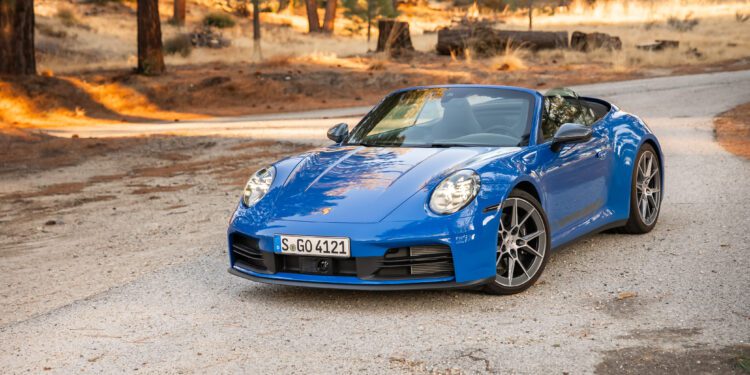

Today, advanced material science and modern manufacturing techniques have largely closed that gap, even as many preconceptions surrounding convertibles live on. At the highest ends of the auto industry, companies like McLaren boast identical torsional rigidity figures between fixed and folding roof offerings. And, while that’s a feat largely reserved for carbon-tubbed cars, most cabriolets today offer near identical performance figures to their coupe counterparts.
The car I’ve been driving this week, the 2025 Porsche 911 Carrera T Cabriolet, makes a compelling argument that the convertible sports car is currently at its best. Explicitly built for an enthusiast audience, it is the lightest cabriolet in the range, courtesy of its reduced sound deadening and lightweight glass. It’s powered by the base Carrera’s 388-horsepower flat-six, blending that powertrain with upgraded suspension as standard. It’s also the only 911 without a GT badge to offer a manual transmission, with Porsche’s PDK not even an option. However, while the T manages to be a fantastic driver’s car, it comes at a substantial premium.

If the T is supposed to be the pared-back IYKYK trim for enthusiasts and the only way to get the 911 in its lightest form, why build a cabriolet at all? Here’s the official answer from Porsche. Nearly a third of all 911s sold in the U.S. are cabriolets or targas, and given that the T is the only way to buy one with a manual transmission, it has to exist to serve this base. Even when given the option to equip the older 992.1-generation T’s with PDKs, roughly 70 percent of buyers still went the manual route. It’s worth point out, however, that a Carrera T Targa has yet to materialize.
The Porsche 911 Carrera T Cabriolet isn’t just a manual-only sports car; it’s proudly so. Tour this Lugano Blue tester and you’ll spot two stickers with H-pattern shifters adorning its rear windows. When you open its doors, you can add two more references to the count, as its puddle lights project that logo onto the ground below. Step inside and you’ll find an identical decal on its dashboard, complemented by an “MT” badge nestled in its center console, mere inches from the shifter. If this all reads a bit silly, I agree with you, but if you’ve already got a bright blue open-top sports car, are a few bragadocious stickers really where we draw the line?

I stopped caring when I first saw this car with its roof stowed. As is a common theme for the Porsche 911, the visual updates introduced by its 992.2 generation are subtle. Its rear light bar does away with its plastic cover to create a three-dimensional effect, while this car’s front bumper simultaneously sports larger openings, even if its forward-facing sensors look tacked on. The curvature of its rear deck contributes significantly to its stunning silhouette, adding just a hint of Speedster in the mix.
This being a Carrera T, it receives a staggered set of Carrera S wheels measuring 20 and 21 inches as standard. In this Lugano Blue finished car, they sport a Vanadium Grey Metallic hue, yet another T exclusive. This color also adorns its exterior graphics pack and its mirror caps.
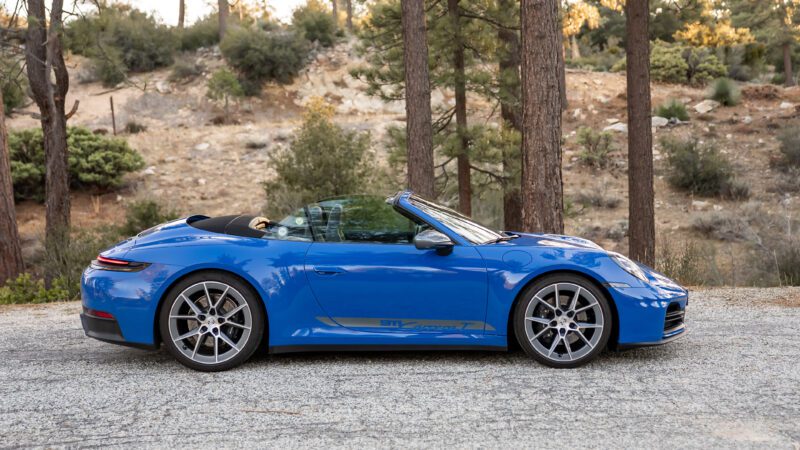
Twist the key to the left of the wheel and the Carrera T’s twin-turbocharged 3.0-liter flat-six springs into life with added volume courtesy of its standard Sports Exhaust system. Given that it’s otherwise a base Porsche 911 Carrera engine, it develops 388 hp and 331 pound-feet of torque. Still, it benefits from a 20-hp bump achieved via larger turbochargers inherited from the 992.1 GTS. It’s transmission choice? Well, peep the stickers.
Out on the road, the Carrera T’s straight-line performance is fine but not mind-blowing. There’s plenty of torque throughout the rev range thanks to those aforementioned turbochargers, and it delivers power steadily, dropping off only as you approach redline. Given that the cabriolet weighs 3,505 pounds, 388 hp is enough to feel decently quick. It’ll sprint to 60 mph in 4.5 seconds, topping out at 182 mph. However, those figures become much tougher to stomach once you consider this car’s as-tested $171,665 price.

You don’t buy a Porsche 911 Carrera T for its straight-line speed. Instead, the success of an open-top sports car is measured by what it can make you feel on your favorite back road. In that regard, the cabriolet is practically flawless.
The manual lays the foundation. It’s a revised version of the seven-speed transmission used on 992.1-generation cars, except it only carries over gears one through six. In practice, the Carrera T’s shifter represents a considerable step forward in terms of feel and precision over what you’ll find in older models. The travel between gates is short, while the shifter offers just the right weight and resistance. It primarily borrows its linkage and bushings from the GT3’s parts bin.

Given that the Porsche 911 Carrera T includes the Sport Chrono package as standard, this gearbox will auto-blip the throttle on downshifts should you want it to. However, this car’s walnut and metal shift knob is a standout detail. It adds a contrasting texture to one of the cabin’s most-used items while just being nice to look at.
The cabriolet backs up its engaging transmission in the bends with masterfully tuned dampers. As standard, the Carrera T gets Porsche’s Active Suspension Management, a setup explicitly tuned for this application that also lowers this convertible’s ride height by 10 millimeters. A knob on the T’s steering wheel allows you to cycle between Normal, Sport, Sport Plus, and Wet drive modes, with its powertrain and suspension adjusting their level of resonse and firmness.

However, even if you crank the dial to Sport Splus, the Carrera T never becomes overly firm. On a winding back road, it’s damped softly enough to absorb imperfections without being harsh. Thanks to revised anti-roll bars, the cabriolet’s body motions are effortlessly controlled, while a combination of Porsche’s Torque Vectoring system and wide 245/35 and 305/30 rubber ensures that its mechanical grip is high.
It’s so effective at being a weekend sports car that, except for the fact that there’s no roof above you, it’s easy to forget you’re in a convertible. Its braking performance is excellent on the count of its lower curb weight. However, it still benefits from the larger six-piston calipers introduced for the 992.2 generation. The T’s electric power steering system backs this up with some of the best tuning in the business. It’s precise but communicative and picks up weight nicely as you load up this car’s front tires.

The result is a sports car, convertible or not, that feels deeply engaging to drive. As is a common theme throughout the Porsche 911’s history, it doesn’t prioritize straightline performance, instead focusing on connecting its driver with the road below. Factor in its added engine noise and wind rushing through the cabin at speed, and it’s the first convertible I’ve tested in a very long time that makes me doubt that I’d pick the coupe over it. If track time isn’t in your future, you shouldn’t either.
Bring the top up, and the Porsche 911 Carrera T incurs few noise and vibration penalties for its reduced sound deadening and lightweight glass. The cabin remains quiet at higher speeds, making it easy to forget you’re cruising in a cabriolet in the first place.

As with its exterior, the T receives plenty of standard equipment, such as its Sport Seats Plus, GT Sport steering wheel, and Sport Chrono package. The tester I’ve been driving contrasts its Vanadium Grey Metallic exterior accents with Satin Gentian Blue trim. It’s visible in its dashboard, center console, and the striped pattern used on its seats and door cards.
As part of the refresh introduced for the 992.2 generation of the Porsche 911, the Carrera T no longer features analogue gauges. However, the physical buttons and switches on its center console remain. Like me, you may be surprised to find how little of a difference this car’s new instrument cluster makes. Although it condenses the old car’s five-dial layout to three, it successfully displays the same useful information with a higher degree of adjustability. Even the digital tachometer felt natural after a few miles.
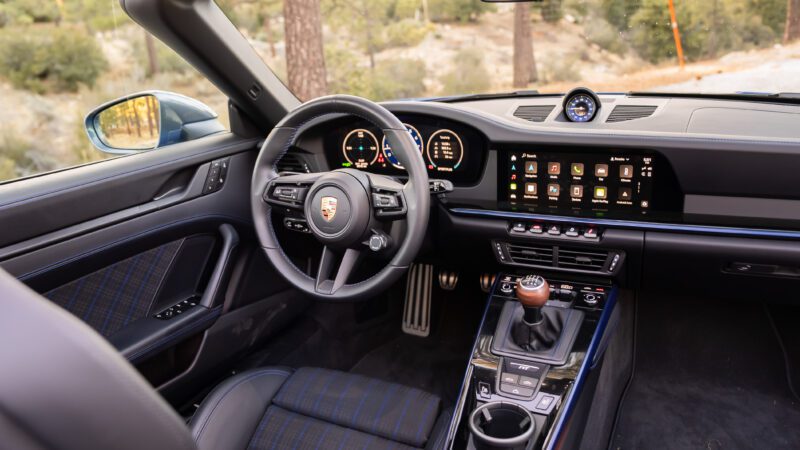
As I mentioned earlier, the Porsche 911 Carrera T Cabriolet comes at a premium. The coupe costs $135,995, including a $1,995 destination fee. The convertible bumps up to $149,295 with fees included, which’ll set you back an additional $13,300. The tester I’ve been driving wears an extra $22,370 in optional extras, bringing its as-tested price up to $171,665.
As an exercise to prove just how fun and engaging a convertible sports car can be, the Porsche 911 Carrera T Cabriolet is practically flawless. Its suspension benefits from a lengthy list of standard equipment and excellent calibration, delivering an exciting driving experience without being overly firm. Its steering is precise and talkative, and its six-speed manual isn’t a highlight solely because it’s the only transmission available. By borrowing from the GT3, it’s both refined and a joy to use.
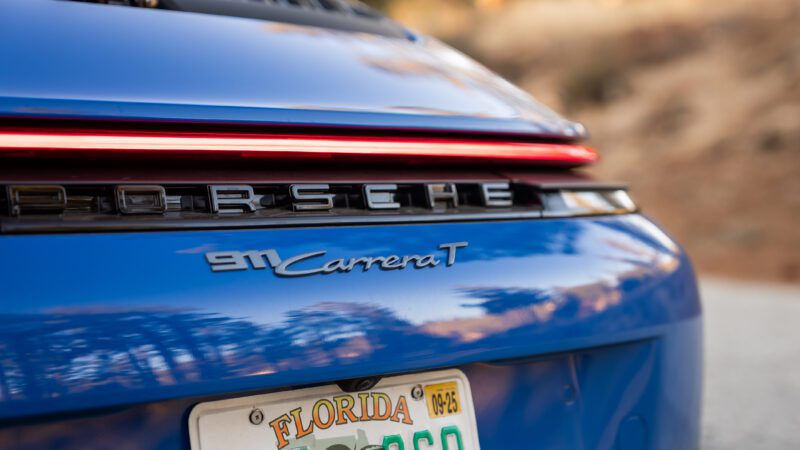
Even as you step back, the cabriolet wears the visual refreshes introduced for the 992.2 generation well, enhancing them with unique Carrera T-specific details and finishes. Inside, its cabin retains hushed noise levels at highway speeds despite its use of lightweight glass, while its unique trim helps it stand out as something unique. Sure, its various decals are a poorly executed gimmick, but you can peel most of them off.
Yet, as brilliant as this convertible is, a sports car powered by a 388-hp base Carrera engine for $171,665 isn’t an enticing proposition. While the T Cabriolet is a thrilling enthusiast’s car, the premium it commands makes it tough to justify.
Tags: Featured
Related Articles
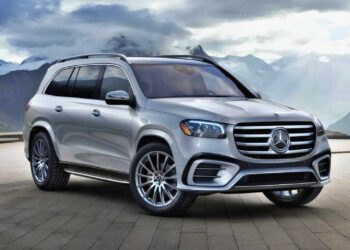
Review: 2025 Mercedes-Benz GLS 580 4Mat
Review: The 2025 BMW M3 Competition xDrive Remains a Super Sedan
by Gabriel Vega
in Reviews
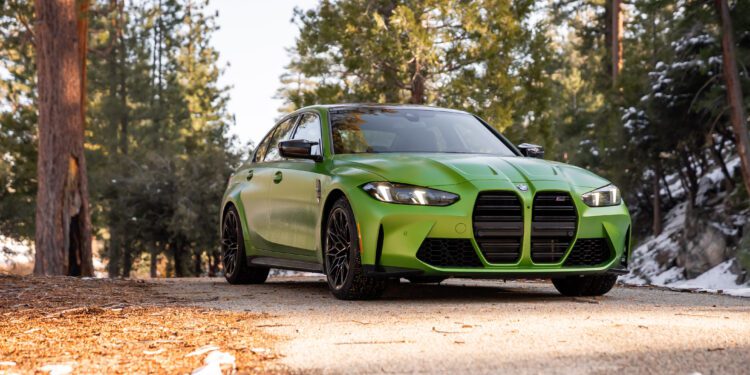
The BMW M3 underwent a major persona shift as it entered its V8-powered E90 generation in 2008. Although the E36 that came before it also offered a four-door configuration, the E90 redefined the modern M3 formula. It grew larger, heavier, and more isolated from the surrounding world while simultaneously making major performance leaps. The F80 that followed refined the idea with even greater athleticism, even if it simultaneously lost the E90’s iconic engine.
Introduced in 2020, the G80 generation, still on sale today, pushes this concept to extremes. Like the M2 I tested a few weeks ago, it trades driver involvement in favor of outright speed, a feat that shouldn’t be surprising considering their extensive parts sharing. However, while the two-seater struggles to distinguish between sports car and grand tourer, the larger M3 knows precisely where it fits. It’s a luxurious sedan first, and a sports car hunter second, a persona that, as I found on a snowy mountain road, suits it well.
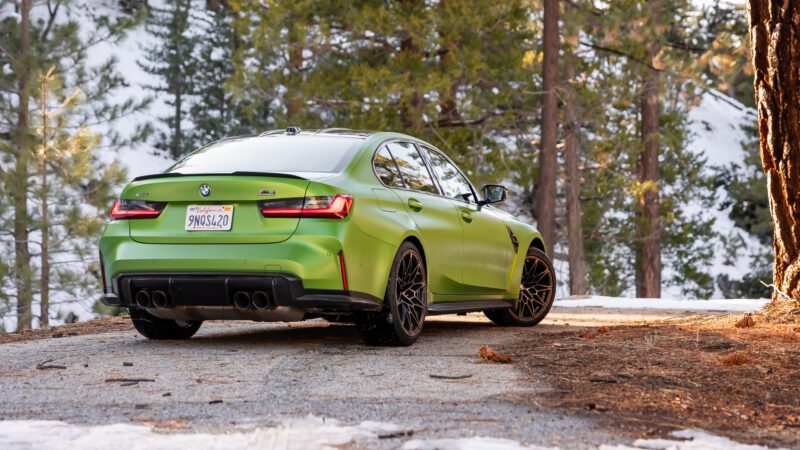
This represents the first time I’ve revisited the BMW M3 since 2023’s Edition 50 Jahre, and although it receives a mid-cycle refresh, its updates are minor. The most significant is a set of new headlights, adorned with an updated daytime light signature. To find the rest, you’ll have to squint. Peek at its trunk lid badge and you’ll find a subtle silver border, a shade that complements a new silver finish for this car’s 825M-style wheels. Given that this tester sports carbon ceramic brakes, it wears a staggered 19 and 20-inch set in the 826M style.
Visually, it’s a case of same, same, but different. The M3’s bumpers, rear diffuser, trunk-lid spoiler, and mirror caps remain unchanged. As such, if you weren’t a fan of this car’s nose when it debuted in 2020, you likely won’t be now. That said, from the front bumper onwards, the G80 looks sensational, especially its rear three-quarter view, thanks to its low stance and wide rear arches. As part of its $14,300 Carbon Package, my tester swaps its plastic exterior trim pieces in favor of the lightweight material to create a sportier aesthetic, contrasting nicely against this sedan’s $4,500 Frozen Tampa Bay Green finish.
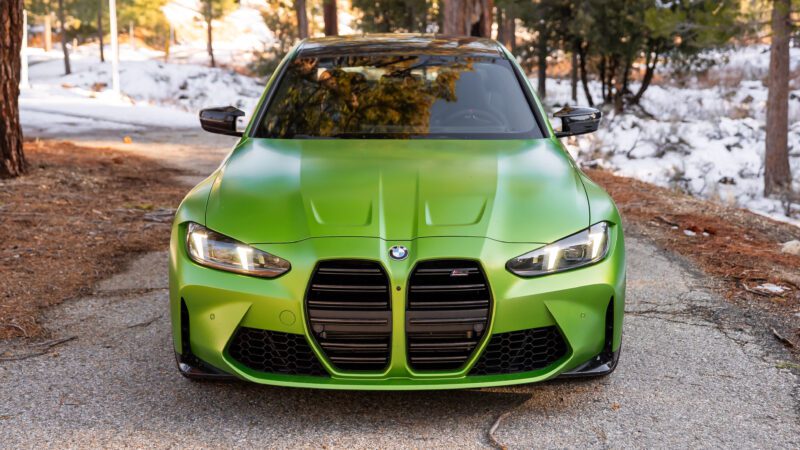
Inside, the refreshed BMW M3 incorporates more significant changes. The first is its new flat-bottom steering wheel, with my tester swapping its standard leather wrap in favor of Alcantara. It’s a subtle update that adds something special to this car’s cabin, particularly once you get up close and see its hollow lower spokes. In contrast, BMW went in the opposite direction with the M3’s new air vents, which look cheaper than their predecessors while also being more challenging to use.
Look beyond its shiny new wheel and you’ll spot a 12.3-inch instrument cluster and a 14.9-inch infotainment screen housed within a single bezel. These displays now run the latest iDrive 8.5 software. Although its updates are subtle, tweaked A/C controls and a new permanent row of app icons slightly increase its usability. However, as with previous iterations of this screen-reliant interior, the need to constantly interact with its main displays ensures it’ll never be free of fingerprints and smudges.
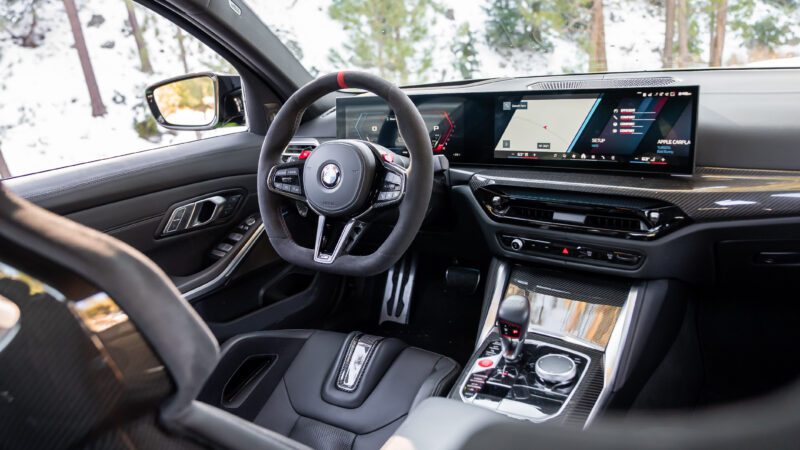
Out on the move, the BMW M3 Competition xDrive settles conflicts with its styling or cabin with shocking straight-line performance. As I point its nose towards the snowy peaks ahead, I’m quickly reminded of just how quick this sedan is. For 2025, xDrive-equipped models receive a 20-horsepower bump, pushing this car’s twin-turbocharged 3.0-liter inline-six to 523 hp while its 479 pound-feet of torque figure carries over unchanged.
Given this car’s power, a 20-hp increase is impossible to detect, especially when the xDrive’s quoted 3.4-second time to 60 mph is untouched. Regardless, the BMW M3 feels like an absolute monster in a straight line, thanks partly to its ZF eight-speed automatic and closely spaced ratios. Simultaneously, its rear-biased all-wheel drive system and wide 275/35 and 285/30 Michelin Pilot Sport 4 S tires ensure its mechanical grip remains high. The result is a 3,990-pound sedan that’s in its element chasing sports cars on a mountain road.
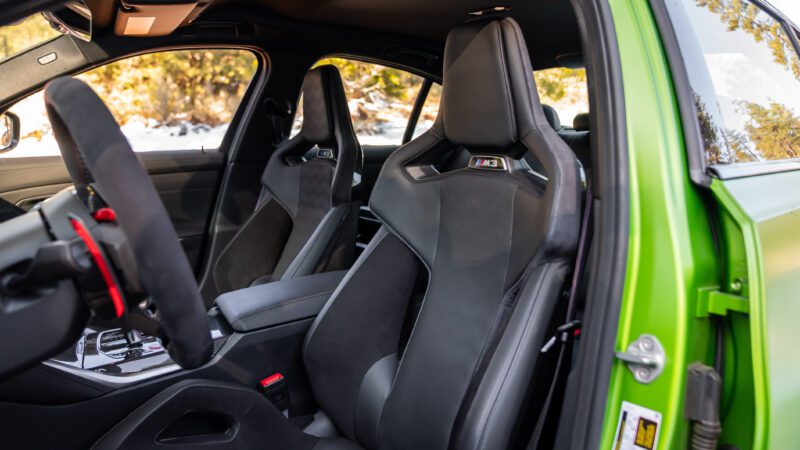
In the bends, its chassis balance is a particular highlight. Although its adaptive dampers can stiffen considerably in the top Sport+ setting, the middle Sport mode yields effortlessly controlled body motions on a winding road. Crucially, it does so without introducing unnecessary harshness into the cabin. My tester’s optional Carbon Ceramic brakes offered plenty of initial bite even in their tamest Comfort setting, making the top Sport mode unnecessary outside of a track scenario.
Much like the G87 M2 I tested recently, the BMW M3 employs a variable steering ratio, which quickens its response as you toggle between Comfort, Sport, and Sport+. However, as the German carmaker aims to make this car’s front end feel as responsive as possible, it tends to apply tuning that borders on being too aggressive. In the top Sport+ mode, the slightest twitch of the wheel invites a response, resulting in a front end that darts around and feels artificial.
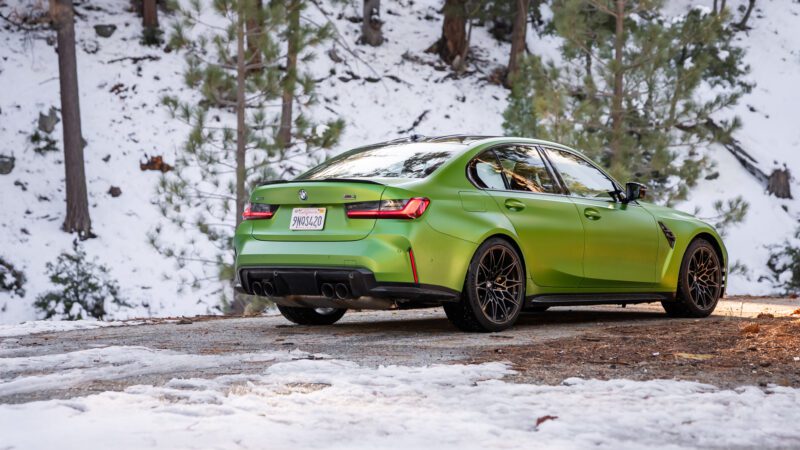
Dial back to Sport or Comfort, and it’ll slow enough to feel more natural. However, don’t expect feedback as this electric power steering system remains notoriously numb, picking up virtually no weight even as you begin to stress this car’s front end. Its powertrain response is a similar story. Step up to Sport+ and the throttle becomes a light switch. However, Sport or Comfort is far more progressive without downsides, given that this car develops its peak power in various modes.
Once dialed in to your liking, the all-wheel drive equipped BMW M3 remains one of the easiest cars to drive quickly. Even if you dial back traction control and all of its power to the rear wheels, its long wheelbase means it’ll execute effortless controlled slides, while its quick steering allows you to catch them easily.
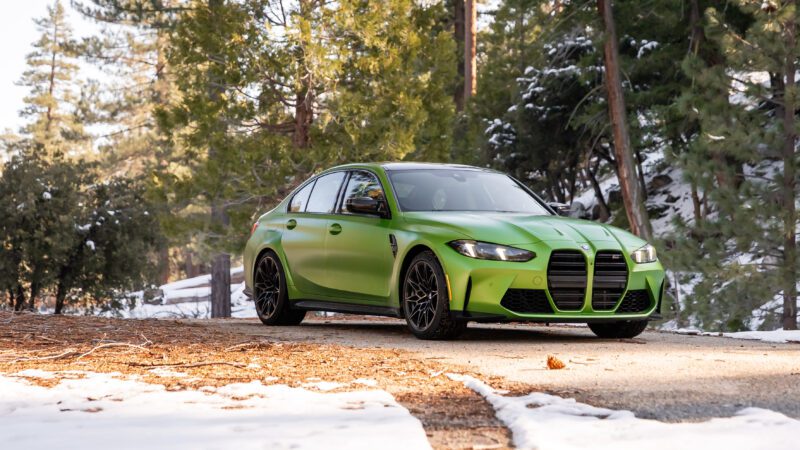
Like the E90 did in 2008, the current M3’s party piece remains its primary focus as a luxurious grand tourer. Skip this tester’s narrow bucket seats and you end up with a daily driver that’s quick but comfortable. The cabin’s noise isolation is excellent, while its once rowdy powertrain settles into the background while cruising in Comfort mode. While far from the most municative performance car, the BMW M3 excels by being an actual multi-purpose machine. A sports car hunter in one moment, a cruiser in the other.
However, this world-beating performance comes at a price, and if BWM responds to recent tariffs imposed by the U.S. government with last-minute increases, it’ll only rise. While the $119,695 M3 CS exited production last year, BMW will sell you a “base” rear-drive M3 for $77,175, a more potent M3 Competition for $81,375, or the range-topping M3 Competition xDrive for $86,475. Please note, all of the prices listed above include a $1,175 destination fee.
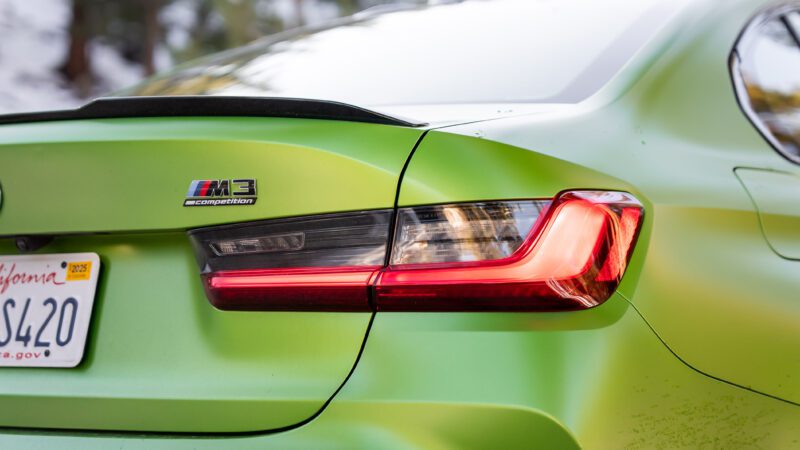
My tester, finished in a $4,500 BMW Individual shade of Frozen Tampa Bay Green, starts as an all-wheel-drive range topper and only ascends pricewise. Its priciest addition is a $14,300 Carbon Package, including bucket seats, an Alcantara-wrapped steering wheel, carbon trim throughout the cabin, and carbon ceramic brakes. Factor in the $1,600 Executive package, and you end up with a BMW M3 Competition xDrive whose as-tested price creeps up on $115,000.
Since the E90 days, the BMW M3 has become quicker and more powerful with each new generation while improving its comfort and refinement. It may not reward you with the ultimate connection with the driving experience, but it offers an ideal blend of sports car performance and daily usability.
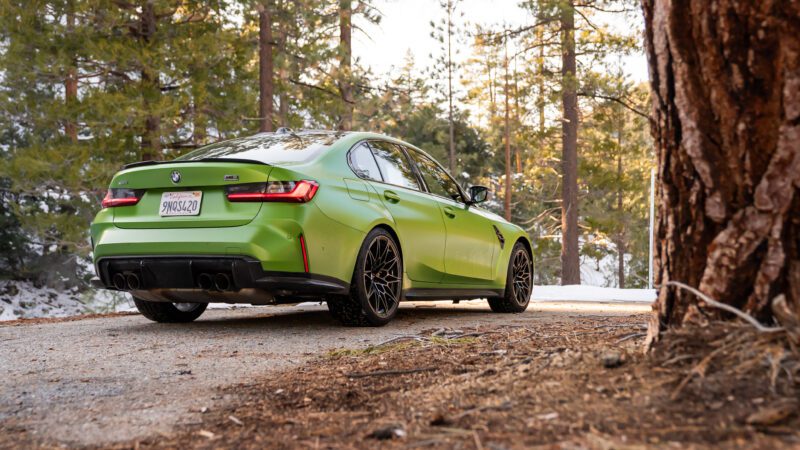
Now in its fifth year, the G80 is expensive, with looming tariffs potentially worsening things. Its front-end styling remains tough to stomach, while some of its latest interior updates result in an unintuitive user experience. However, if a proper one-car solution for daily use and weekend fun is what you’re after, the latest M3 still makes a strong case that it’s the one to have.
.
Tags: Featured
Related Articles

Review: 2025 Mercedes-Benz GLS 580 4Matic
Eating Up Monotonous Miles The drive from Milwaukee to St….
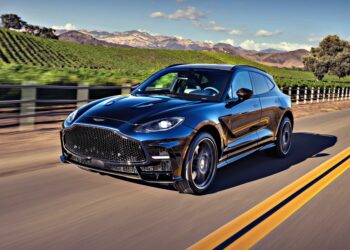
2026 Aston Martin DBX S First Drive: The Best Super SUV Gets Even Better
Model year 2026 marks the return of S variants to…
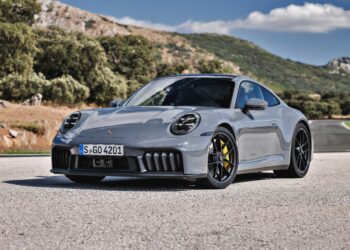
Review: 2025 Porsche 911 Carrera GTS T-Hybrid Electrifies Potent Performance
Picking through the menus of the infotainment screen and digital…



